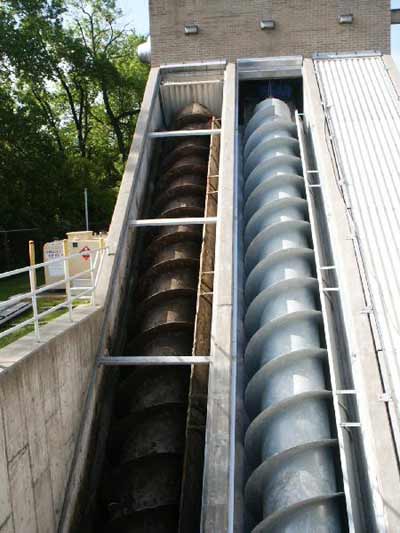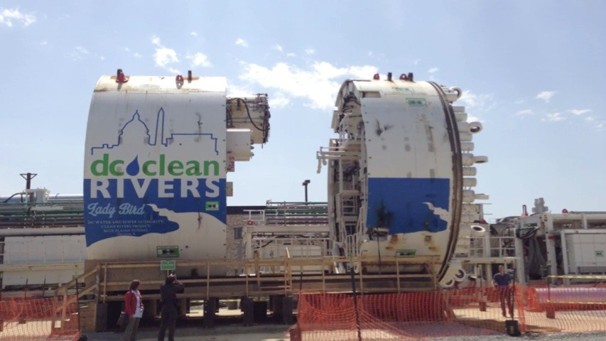Water 101: Preparing Water for the Beverages
Adapted from
Water Usually Needs Work To Deliver Quality Beverages
by Matt Greenwald.
“Regardless of the method of delivering a beverage — fresh ground, capsules, espresso, instant, you name it — the common denominator among them all is water. Because brewed coffee and tea are 98% to 99% water, this familiar fluid also can be the biggest enemy of quality hot drinks and well-working brewing equipment. Untreated or improperly treated water will result in increased service calls, accelerated equipment and component mortality rates, and degraded taste profiles of the products themselves.” — Matt Greenwald.
The process of water purification is very complex, and the intent of this article is not to be a comprehensive guide to the science of water and water purification. Rather it’s “Water 101,” an effort to point out the importance of understanding how this most basic compound can result in excessive, yet avoidable, expenditures when it is overlooked, as it often is.
The OCS industry confronts this challenge alongside many other industries, from pharmaceutical companies to breweries. The beer many of us enjoy (in moderation, of course) is 97% water, so breweries find themselves spending millions on water purification. For the same reason, innumerable retail coffee locations throughout the world will spend $25,000 or more per store to purify the incoming water supply.
Spending $25K on water treatment would be excessive for our purposes, but not understanding the water conditions in the areas in which we work, and the financial consequences of failing to correct those conditions, will not only lessen the quality of your product, but will undoubtedly result in avoidable expenses that none of us need.
Even though it’s the most abundant compound on the planet, water is fairly complex. Do you remember learning about the periodic table of elements in 9th grade? Here is where you will find the recipe: two parts H (hydrogen) + one part O (oxygen) = H2O, commonly known as water.
When John Guest introduced quick-connect fittings, even our most mechanically challenged colleagues were able to consider themselves plumbers almost overnight. Thankfully, the water treatment industry has done something similar for us; it has developed simple, inexpensive water-testing devices that allow us to quickly determine exactly which water treatment technology is most applicable to each installation.
Pure H2O is not the villain that municipal or even spring water is to our equipment and beverages. If those 1/4″ and 3/8″ copper and poly lines were delivering H2O in its purest form, this issue wouldn’t be as critical as it is. But, alas, pure water is rarely available. We are all challenged by particles, dissolved minerals and chemicals, most of which are your equipment’s and your beverages’ biggest enemies. Even more troubling, those undesirable components are not the same all over the country; therefore, water needs to be addressed specifically for each region.
Municipal water treatment facilities treat the water in many different ways, including the addition of chemical disinfectants, coagulants to precipitate solids, and so on and on. In addition to these additives, water also contains minerals introduced by rocks, among other natural sources, as well as leaching from the water supply. Minerals accumulate throughout the pipeline, even in the piping found in buildings; and that piping variously contains copper, zinc, lead and other metals.
When minerals dissolve, water becomes “hard.” While hard water is safe to drink, it will cripple plumbing systems, coffee brewers, espresso machines and practically anything metal it touches by depositing successive layers of “scale” that obstruct flow and impair heat transfer. To protect equipment, hard water needs to be softened in one way or another.
Though water filtration manufacturers have come a long way over the years in developing filters that assist in softening the water, it is important to remember that water filtration and water softening are not the same. One removes particles and chemicals; the other neutralizes dissolved minerals.
Water filtration restricts the flow of solid particles, generally by capturing them in some sort of membrane that will eventually clog, requiring replacement and cleaning. Particles found in water are most often measured in microns. It is said that the human eye cannot see any item smaller than 50 microns, while the standard OCS water filter will remove anything down to a size of 0.5 micron.
Most of the water filtration cartridges used in the OCS and vending sectors will contain some sort of activated carbon block that is used to help in removing the thousands of different chemicals that can be found in a municipal water supply. The most common of these is chlorine, added to water to destroy bacteria and other pathogens. It imparts a distinctive smell and flavor to water treated with it, which is why filter cartridges marketed to our industry often times read “Taste and Odor.”
Water softening refers to the neutralization or removal of the minerals and other, dissolved solids that may accumulate during the water transfer process. This is more important in some areas than in others, but it is desirable nearly everywhere.
The most economical and efficient way to measure the Total Dissolved Solids in a location’s water supply is to purchase an inexpensive TDS meter, or something as simple as water test strips. Both methods require a quick sampling of the water to produce a reading of the TDS, usually in parts per million
(PPM).There are several ways to deal with the minerals (chiefly calcium) dissolved in water that make it hard. The earliest and most widely used is “calgon,” which describes any of several materials that have a detergent effect, retarding the ability of the calcium to come out of solution and plate itself on the inside of the hot-water tank. This is widely used to protect espresso equipment, but it has been strongly discouraged for use in vending machines and conventional gravity brewers, since the calgon also impairs extraction of soluble solids from ground coffee. For that reason, Everpure devised a polyphosphate sequestration method, half a century ago, that keeps the calcium ions in solution without giving the water that soapy, softened feel, and does not degrade coffee flavor development. Other sequestration methods seem to be in use now, but they all do the same thing.
A reverse-osmosis water treatment system will remove all the minerals and leave them on one side of its semipermeable membrane, while pure water on the other side can be used in hot-water equipment without anything coming out of solution (because there is nothing in the solution). Water treated with reverse osmosis is, basically, distilled water, and so is not very interesting to drink. Some people like distilled water for brewing coffee; others think that some mineral content enhances the flavor — but not calcium.
Operators often need to reach out to a local supplier of water treatment products. These agents can give you a lesson on the water supply in the area, help you understand what challenges you confront and recommend ways to resolve issues.
Treat your water well, and your equipment — and your customers — will return the favor.
MATT GREENWALD is the director of vending and OCS at Betson Enterprises (Carlstadt, NJ). Greenwald is a 20-year veteran of the commercial coffee equipment industry, where he’s worked for roasters, distributors and manufacturers. Prior to joining Betson, he was vice-president of a national organization that provides installation, repair and maintenance services to some of the world’s largest retailers, equipment manufacturers and coffee companies.
Source: Vending Times.




![coffeeclassic[1]](http://purewatergazette.net/blog/wp-content/uploads/2012/05/coffeeclassic1.jpg)
![fc012_306[1]](http://purewatergazette.net/blog/wp-content/uploads/2013/04/fc012_3061-150x300.jpg)

![boron_306[1]](http://purewatergazette.net/blog/wp-content/uploads/2013/04/boron_3061.jpg)



![0910_yangtze_630x420[1]](http://purewatergazette.net/blog/wp-content/uploads/2013/01/0910_yangtze_630x4201-300x200.jpg)
![hosebath[1]](http://purewatergazette.net/blog/wp-content/uploads/2013/04/hosebath1.gif)
![flexi-fountain-photo2[1]](http://purewatergazette.net/blog/wp-content/uploads/2013/04/flexi-fountain-photo21.jpg)
![flexi-fountain-photo8[1]](http://purewatergazette.net/blog/wp-content/uploads/2013/04/flexi-fountain-photo81.jpg)


![DCWATER0071365539345[1]](http://purewatergazette.net/blog/wp-content/uploads/2013/04/DCWATER00713655393451.jpg)

